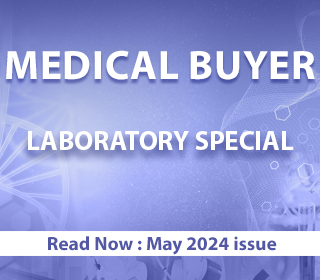Buyers Speak
2020 – Newer beginning for better care

Another year passed by, new start, new thinking. What’s in store in 2020? Evolution is a part of life – be it in personal or professional life. Updating and upgrading is the way of life. New information and new techniques continue to emerge every year. Healthcare is also going through transformation; what used to be pure clinical science has been armed with newer diagnostic tools and modalities. Rapid change in use of technology in healthcare has changed the scenario.
So, what do we look for in 2020? Integration of technology and the knowledge of clinical skills in healthcare. Internet has revolutionized communication and opened up volume of information, not only to healthcare providers but even to common public. Awareness of illness and when to seek advice has been the prime objective in educating the population – be it a smart watch that can send ECG, oxygen saturation level, heart rate, or a phone-based app that can communicate to the doctor.
Accuracy has been validated by experts in the field. Newer cost-effective devices that can be attached to smart phones and act as diagnostic devices, e.g., sugar-monitoring devices, are now in the market. Robotic surgeries where in instead of the surgeon, robots perform operations, of course operated by surgeons. Some of my friends, who had hands on experience with robotic surgeries, claim that it gives them an extra arm to reach certain parts of the body, otherwise difficult to reach in conventional surgeries.
Respiratory devices, such as BiPAP, CPAP, are available in portable forms with rechargeable batteries. which can last as long as 8 hours in a single charge, thus enabling patients to travel with the devices by road, water, or even air with little or no discomfort. Linking on to AI support will also enable devices to send SOS messages to someone preassigned. Number of such devices, which definitely have increased compliance in patients, have given them a better quality of life.
Though not yet popularized, air purifiers, which can give a better air quality in the closed premises, promise to be of good use in avoiding or minimizing indoor pollution; though they are better but still they do not replace the natural sources like trees. It comes good for hospital setup where in sick patients, who can’t be mobile outside, can get benefit in faster recovery. This may be a good idea for decreasing airborne infections, especially hospital-acquired pneumonias. Reach-out programs in tuberculosis is a major endeavor by the Government of India, wherein private-public partnership has been established in order to report cases, track them, improve the compliance to drug administration and consumption, a step toward effective implementation for eradication of tuberculosis. The task is to make sure every diagnosed case gets best and full treatment. All this is possible to achieve with the help of online data and registry, which will be extended to other major diseases and will help in maintaining a national registry.
Many apps are available for patient data recording and archive the data when needed, and can be managed on smart phones and tabs. Another milestone to achieve is telemedicine for rural areas. Doctors in rural areas can access live opinion from the expert doctors from the cities and medical colleges in real time, and treat patients with better care. This is a landmark project to reach out to the rural population. The government should come up with a policy to implement such schemes in order to improve rural health. Live webinars with interactive sessions have become a norm wherein healthcare providers in different parts of the country can attend simultaneously.
Advent of AI (artificial intelligence) will be a boon to add armamentarium of diagnostic skills with various devices, which can come up with logical solutions and better analysis of the condition. It will aid in planning, programming, and execution more efficiently with zero error in the process. No technology is complete without a brain that knows how to use it appropriately. Indiscriminate use is also possible with availability of many options and too much reliability on devices is also not good. As it goes with the classical saying, “the most important part of the stethoscope is the part in between the ear plugs,” everything should be a helping tool for better care and possibly good outcome.














